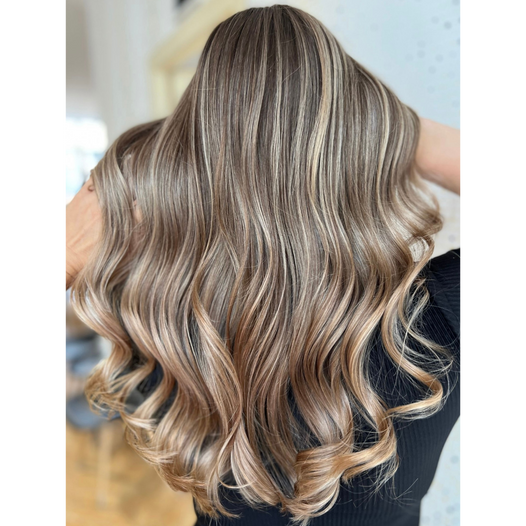
Type 4A, 4B and 4C Hair Characteristics, Care Routine, and Beneficial Ingredients To Seek

Type 4 hair, often referred to as coily or kinky hair, showcases a beautiful array of tightly coiled or zigzag patterns. Within this category, subtypes 4A, 4B, and 4C each possess their unique characteristics and care requirements.
Type 4A hair is generally soft, fine, and delicate, requiring gentle care to maintain its curl definition. Women with type 4A hair often face challenges such as dryness, frizz, maintaining moisture balance, and preventing tangles due to tightly coiled curls with an "S" pattern. This hair type may also be susceptible to shrinkage, making it appear shorter than it actually is.
Type 4B hair is tight, densely packed coils that form a distinct zigzag or "Z" pattern. This hair type shrinks significantly in length and requires ample moisture to maintain elasticity, prevent breakage, and enhance curl definition.
Type 4C hair consists of tightly coiled or densely packed curls with minimal defined patterns. It may appear more like a "Z" or "S" pattern when stretched. This hair type is delicate, fragile, and requires regular moisture to combat dryness and maintain length retention. The hair may be more prone to knots and requires careful handling to minimise damage.
Care Routine:
Cleansing: Use a sulfate-free, moisturising shampoo to prevent excessive drying and preserve natural oils. Focus on massaging the scalp and avoid harsh scrubbing.
Co-Washing: Consider incorporating co-washing (washing with conditioner) into your routine to retain moisture and avoid stripping natural oils. Use a clarifying shampoo occasionally to remove build-up.
Conditioning: Apply a rich, moisturising conditioner, focusing on the mid-lengths and ends. Detangle gently with a wide-tooth comb or fingers while the conditioner is still in.
Deep Conditioning: Regularly use a deep conditioner or hair mask to provide intense hydration. Focus on the ends and use a plastic cap or apply heat to enhance product absorption.
Detangling: Use a wide-tooth comb, your fingers or detangling brush to gently detangle hair when wet and coated with conditioner. Start at the ends and work your way up to the roots to prevent breakage.
Moisture and Styling: Apply a leave-in conditioner or curl cream to damp hair, ensuring even distribution. Use the praying hands or finger-coiling method to define curls and minimise frizz. Seal in moisture with a natural oil or butter. Type 4C hair tends to be very dry and prone to breakage. It’s important to moisturize your hair regularly using a water-based moisturizer, leave-in conditioner, or hair oil. You can also use the LOC (Liquid, Oil, Cream) method to seal in moisture
TIPS:
Protective Styles: Consider incorporating protective styles like braids, twists, or updos to minimise manipulation and protect the ends from damage. Use a satin or silk scarf or bonnet to protect your hair at night.
Avoid heat styling: Type 4C hair is fragile and can easily become damaged from heat styling tools like flat irons and curling irons. Instead, try to embrace your natural texture and use heat-free styling techniques like twist-outs, braid-outs, or bantu knots.
Avoid harsh chemicals: Type 4C hair is delicate and can be easily damaged by harsh chemicals like relaxers and hair dyes. If you must use chemicals on your hair, be sure to use a mild formula and follow the instructions carefully.
Trim your hair: Trim your hair every 3-4 months to get rid of split ends and promote healthy hair growth.
Beneficial Ingredients:
Humectants: Seek products with humectants like glycerin and aloe vera, which hydrates, softens, moisturises and promotes healthy hair growth.
Coconut Oil: Look for products containing coconut oil, known for its moisturising properties, to nourish and add shine to type 4A hair.
Shea Butter: Look for products containing shea butter, which provides intense moisture and helps with manageability, softness, and reducing frizz in type 4B hair.
Olive Oil: Seek products with olive oil, known for its moisturising and nourishing properties, to add shine and protect type 4B hair.
Jojoba Oil: Look for products with jojoba oil, known for its ability to moisturise and mimic the natural oils produced by the scalp, in order to nourish and protect type 4C hair.
Take our Hair Type Quiz for further guidance and full product recommendation. Experiment with different products and find what works best for your hair to properly care and nourish your hair.









Leave a comment